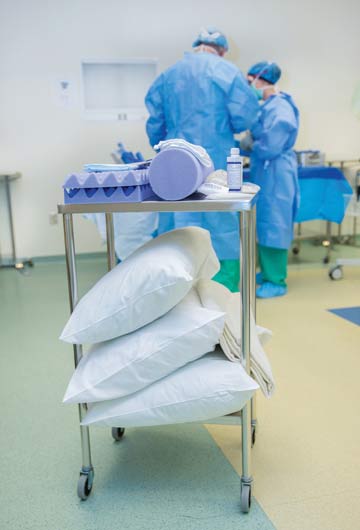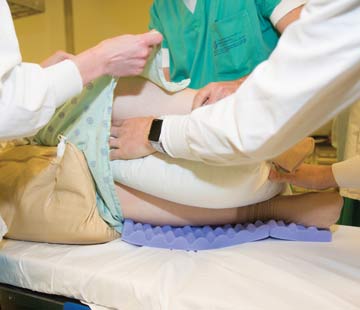Don’t look past pressure injury risks in outpatient ORs, where skin breakdown is becoming more of a concern now that increasing numbers of heavier patients are undergoing more complex and longer procedures. The clinical team at our large medical center has implemented several prevention protocols that have proven successful in protecting patients’ skin. For the past 2 years, we haven’t had a single patient suffer a pressure injury, thanks to the program’s essential features.
- Pre-op evaluations. Before surgery, we perform head-to-toe assessments of patients, helping us to identify existing pressure injuries so we can document and address them before surgery. We changed our policy so that any patient in a procedure lasting 3 hours or more is considered high risk, as well as anyone with a score of 16 or below on the Braden Scale for Predicting Pressure Injury Risk (osmag.net/M3BaHo). Those with a BMI of 19 or below, or 35 and above, are also considered high risk. Once we identify patients as high risk, we ask them to wear a bright green bouffant cap instead of our usual blue ones. We also place a green placard in their charts, so it’s clear to all staff which patients are at heightened risk.
- Positioning aids. If a patient has an existing injury, we use a 5-layer silicone border dressing to help protect the delicate area of skin. We also apply heel protectors to high-risk patients in the supine position, and keep a range of prophylactic foam dressings, gel-based pads and fluidized positioning devices available on our pressure injury cart to use on patients considered high risk.
.svg?sfvrsn=be606e78_3)


.svg?sfvrsn=56b2f850_5)